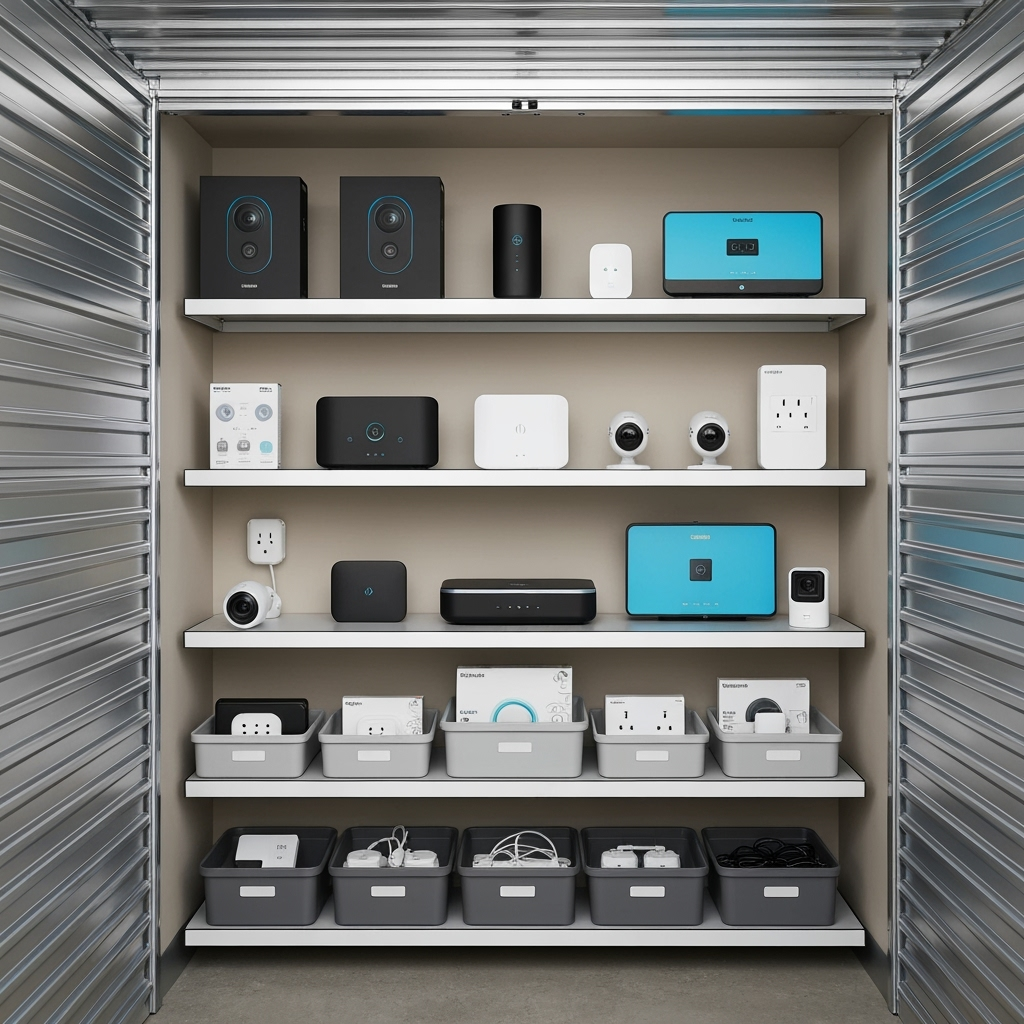Why Smart Home Device Storage Matters
As our homes become increasingly connected, proper storage of smart devices has become crucial during moves, renovations, or temporary relocations. This comprehensive guide will help you protect your valuable smart home technology investment while ensuring a smooth transition back to your connected lifestyle.

Categories of Smart Devices Requiring Special Storage
- Smart thermostats and climate control systems
- Security cameras and home monitoring equipment
- Smart speakers and home assistants
- Smart lighting systems and controls
- Connected appliances and their components
- Hub devices and network equipment
Storage Preparation Tips
Before storing your smart home devices, follow these essential preparation steps:
- Document your current setup with photos and notes
- Back up all device settings and configurations
- Remove batteries from battery-operated devices
- Clean all devices thoroughly
- Gather original packaging if available

Climate-Controlled Storage Requirements
Smart home devices are sensitive to environmental conditions. Here’s what you need to know about climate-controlled storage:
- Maintain consistent temperature between 65-75°F
- Keep humidity levels between 45-50%
- Avoid direct sunlight exposure
- Ensure proper ventilation
- Monitor for moisture regularly
Packaging Best Practices
Proper packaging is crucial for protecting your smart devices:
- Use anti-static bags for electronic components
- Apply bubble wrap for impact protection
- Store in sturdy, waterproof containers
- Label all boxes clearly with contents and handling instructions
- Keep related components together
Organization and Inventory Management
Stay organized with these inventory management tips:
- Create a detailed inventory list
- Take photos of serial numbers and model information
- Store small components in labeled plastic bags
- Keep a digital backup of all documentation
- Maintain a diagram of your device network setup
Security Considerations
Protect your smart home investment with these security measures:
- Reset devices to factory settings if appropriate
- Remove personal data and Wi-Fi information
- Document all passwords and access codes
- Store in a secure, monitored facility
- Consider insurance coverage for stored items
Reinstallation Planning
Prepare for smooth reinstallation with these steps:
- Keep installation guides and manuals accessible
- Store mounting hardware with corresponding devices
- Label all cables and connections
- Maintain a timeline for device reactivation
- Plan for system updates upon reinstallation
Professional Storage Solutions
Consider these professional storage options:
- Climate-controlled storage units
- Security-monitored facilities
- Short-term tech storage services
- Professional packing services
- Insurance-backed storage solutions
Common Mistakes to Avoid
Protect your investment by avoiding these storage pitfalls:
- Storing devices in extreme temperatures
- Failing to document network configurations
- Improper packaging leading to damage
- Mixing different types of batteries
- Neglecting to remove personal data
Conclusion
Proper storage of smart home devices requires careful planning and attention to detail. By following these guidelines, you can ensure your connected technology remains protected and ready for future use. Remember to prioritize climate control, proper packaging, and detailed documentation for the best results.










Leave a Reply